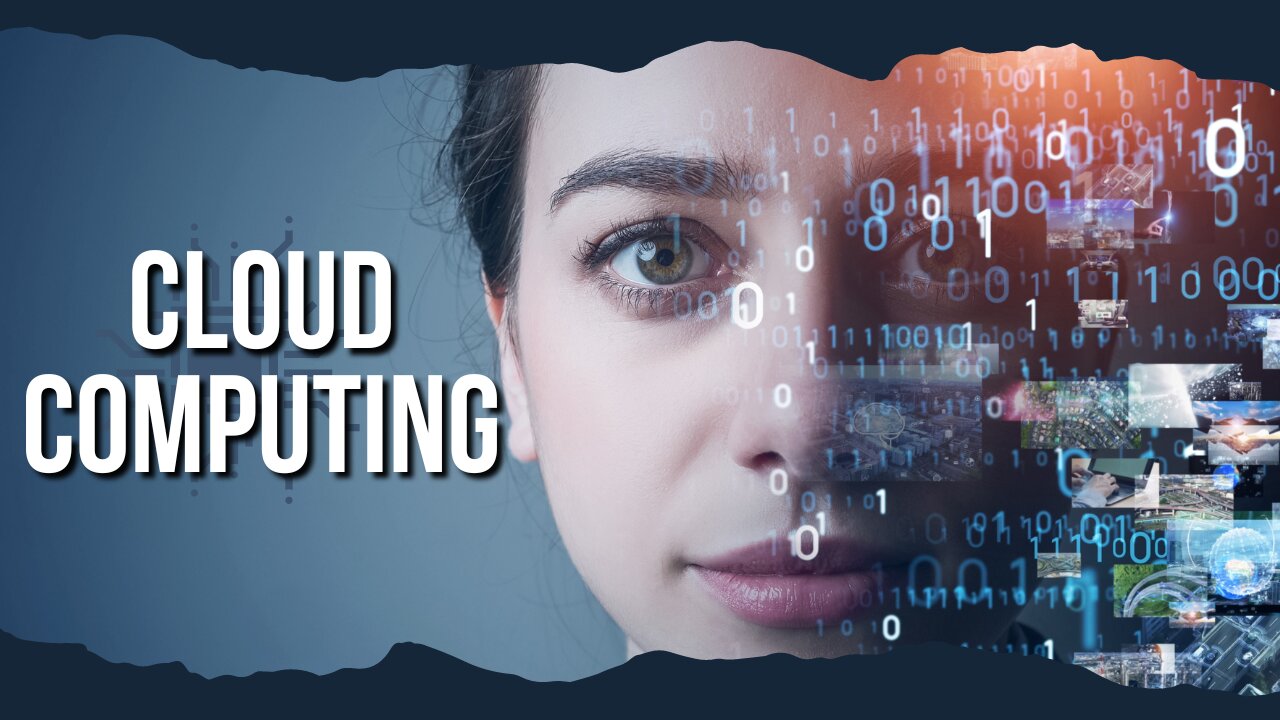Premium Only Content

WHAT IS CLOUD COMPUTING....?
Cloud computing is on-demand access, via the internet, to computing resources—applications, servers (physical servers and virtual servers), data storage, development tools, networking capabilities, and more—hosted at a remote data center managed by a cloud services provider (or CSP). The CSP makes these resources available for a monthly subscription fee or bills them according to usage.
Compared to traditional on-premises IT, and depending on the cloud services you select, cloud computing helps do the following:
Lower IT costs: Cloud lets you offload some or most of the costs and effort of purchasing, installing, configuring, and managing your own on-premises infrastructure.
Improve agility and time-to-value: With cloud, your organization can start using enterprise applications in minutes, instead of waiting weeks or months for IT to respond to a request, purchase and configure supporting hardware, and install software. Cloud also lets you empower certain users—specifically developers and data scientists—to help themselves to software and support infrastructure.
Scale more easily and cost-effectively: Cloud provides elasticity—instead of purchasing excess capacity that sits unused during slow periods, you can scale capacity up and down in response to spikes and dips in traffic. You can also take advantage of your cloud provider’s global network to spread your applications closer to users around the world.
The term ‘cloud computing’ also refers to the technology that makes cloud work. This includes some form of virtualized IT infrastructure—servers, operating system software, networking, and other infrastructure that’s abstracted, using special software, so that it can be pooled and divided irrespective of physical hardware boundaries. For example, a single hardware server can be divided into multiple virtual servers.
Virtualization enables cloud providers to make maximum use of their data center resources. Not surprisingly, many corporations have adopted the cloud delivery model for their on-premises infrastructure so they can realize maximum utilization and cost savings vs. traditional IT infrastructure and offer the same self-service and agility to their end-users.
If you use a computer or mobile device at home or at work, you almost certainly use some form of cloud computing every day, whether it’s a cloud application like Google Gmail or Salesforce, streaming media like Netflix, or cloud file storage like Dropbox. Industry analyst Gartner projected recently that worldwide end-user public cloud spending to reach nearly USD 600 billion in 2023 (link resides outside ibm.com).
-
 LIVE
LIVE
Melonie Mac
4 hours agoGo Boom Live Ep 40!
410 watching -
 LIVE
LIVE
Kim Iversen
3 hours agoDOGE, Trump, Aliens and Remote Viewing: A Deep Dive into the Unknown
1,581 watching -
 1:20:08
1:20:08
Redacted News
5 hours agoPutin smells a TRAP as Ukraine agrees to Trump's U.S. ceasefire plan | Redacted w Clayton Morris
127K142 -
 51:59
51:59
Candace Show Podcast
5 hours agoMahmoud Khalil’s Detainment: Fighting Terrorism Or Speech? | Candace Ep 158
91.4K291 -
 7:43:31
7:43:31
Dr Disrespect
9 hours ago🔴LIVE - DR DISRESPECT - PUBG - PRO TACTICALLY WINNING
154K14 -
 1:02:40
1:02:40
In The Litter Box w/ Jewels & Catturd
1 day agoUSAID to Staff: Shred and Burn | In the Litter Box w/ Jewels & Catturd – Ep. 760 – 3/12/2025
79.1K30 -
 2:21:38
2:21:38
Darkhorse Podcast
8 hours agoMAGA, MAHA, and the Unity Movement: The 267th Evolutionary Lens with Bret Weinstein and Heather Heying
85.5K30 -
 1:58:45
1:58:45
The Quartering
9 hours agoCorrupt Democrats Caught SHREDDING Evidence, Assassination Plot On Alex Jones, Tariff Fallout & More
153K50 -
 1:27:14
1:27:14
The Officer Tatum
7 hours agoLIVE: Trump and Elon BREAK INTERNET With BRAND NEW TESLA | Officer Tatum Show EP 78
79.3K49 -
 2:10:41
2:10:41
Adam Carolla
1 day agoCatalytic Converter Theft Turns Deadly + UPDATE! Rebuilding Malibu | Adam’s Wild Malibu Trip
52K17